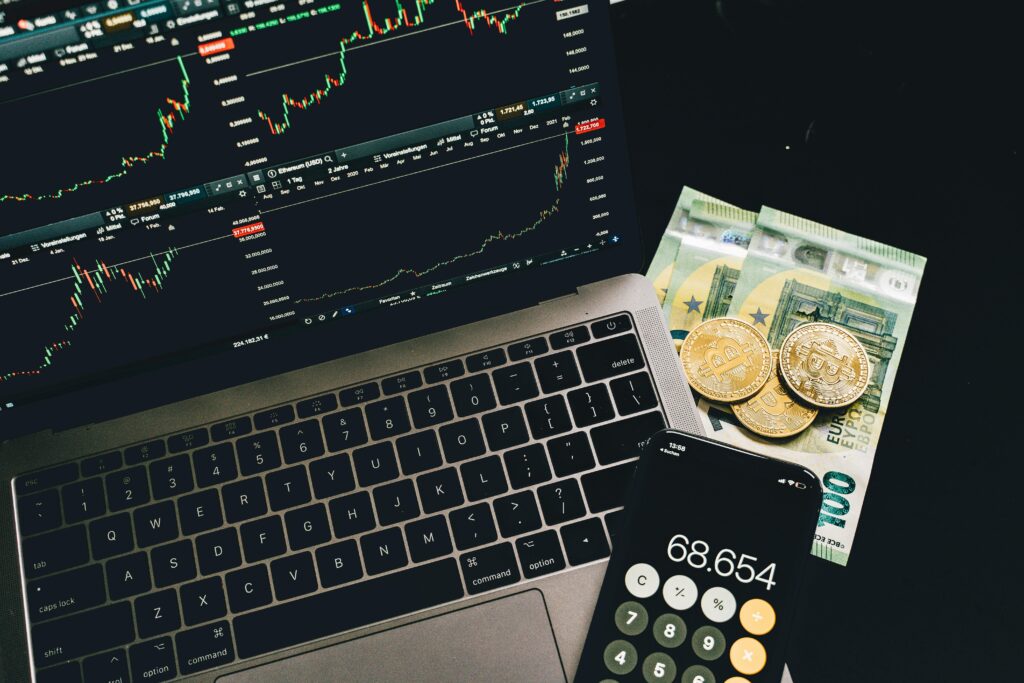Bitcoin and Inflation: Navigating Volatility in an Uncertain Economic Climate
In recent weeks, a convergence of macroeconomic factors has led to heightened volatility in global financial markets, particularly in Bitcoin. The world’s most prominent cryptocurrency has witnessed sharp swings in its value, exacerbated by rising inflation expectations and the uncertainty surrounding the U.S. Federal Reserve’s monetary policy. One of the key drivers of this volatility is the anticipated uptick in U.S. inflation, which is projected to increase by 0.2% to 2.6% year-over-year—the first year-on-year rise since March 2024. As Bitcoin’s 30-day implied volatility spiked to as high as 90% in the past week, investors and analysts alike are bracing for further fluctuations, particularly when the upcoming U.S. inflation data is released. Know what is blockchain security?
This article will explore the intersection of Bit-coin’s and inflation, delve into the causes and implications of Bitcoin’s volatility, and examine how inflationary pressures might shape Bit-coin’s future trajectory. Through this lens, we will attempt to understand the intricate relationship between the traditional financial system, central bank policies, and decentralized digital assets like Bitcoin.

The Rising Tide of Inflation
Inflation, broadly defined as the rate at which the general level of prices for goods and services rises, leading to a decrease in purchasing power, is a central concern for policymakers, businesses, and consumers alike. The past few years have seen inflationary pressures fluctuate due to a variety of factors, including supply chain disruptions, energy price shocks, labor shortages, and the aggressive monetary policies enacted in response to the COVID-19 pandemic.
Over the course of 2024, inflation has appeared to stabilize following the dramatic price increases witnessed during the earlier phases of the pandemic recovery. However, the latest data indicates a potential uptick, with year-over-year inflation expected to increase by 0.2% to 2.6%—the first such rise since March 2024. This increase, while relatively modest in comparison to the inflationary spikes experienced during 2021 and 2022, marks a shift in the economic landscape, signaling the persistence of inflationary forces despite broader efforts to cool down the economy.
Several factors may be contributing to this increase in inflation expectations:
- Higher Commodity Prices: Global commodity prices, including energy and raw materials, have experienced fluctuations that could contribute to cost-push inflation. Recent geopolitical tensions and weather events have also disrupted supply chains, leading to higher prices for goods and services.
- Tight Labor Markets: While labor markets in the U.S. and other advanced economies have shown signs of cooling, they remain relatively tight. Wages have increased in many sectors, and businesses are still facing difficulty finding skilled workers. Higher labor costs are often passed on to consumers, contributing to inflation.
- Monetary Policy and Interest Rates: The Federal Reserve and other central banks have raised interest rates in an attempt to curb inflation and cool off an overheated economy. However, these policy actions may not have fully worked their way through the economy, and inflationary pressures could persist as a lagging effect of past stimulus measures.
- Geopolitical Tensions and Global Trade: Ongoing geopolitical tensions, particularly in Europe and Asia, have also disrupted international trade and supply chains. These disruptions tend to raise the cost of goods and services globally, contributing to inflationary pressure.
Despite this projected uptick in inflation, the overall rate is expected to remain well within the targets of central banks like the Federal Reserve. However, even a modest increase in inflation can have outsized effects on markets—especially assets like Bit-coin, which are often seen as inflation hedges or speculative assets.
Bitcoin’s Response to Inflation and Volatility
Bitcoin’s has long been viewed as a potential hedge against inflation, primarily due to its fixed supply of 21 million coins and its decentralized nature. Unlike fiat currencies, which can be printed by central banks at will, Bit-coin’s supply is capped, which theoretically makes it immune to inflationary pressures caused by currency debasement. For this reason, many proponents of Bitcoin view it as “digital gold” or an alternative store of value in times of rising inflation.
However, Bit-coin’s price does not always follow a clear or predictable path in response to inflationary data. Bitcoin is notoriously volatile, and its price is influenced by a range of factors beyond just inflation. In fact, Bitcoin has often moved in counterintuitive ways, rising sharply in periods of inflation but also experiencing significant sell-offs during times of economic uncertainty.
Bitcoin’s Implied Volatility Surge
One of the most striking recent developments in the Bitcoin’s market has been the sharp spike in its implied volatility. Bit-coin’s 30-day implied volatility, which measures the expected price fluctuations in the cryptocurrency over the next month, surged to as high as 90% in the past week. This is a significant jump, reflecting a growing sense of uncertainty and heightened market risks.

Implied volatility is often used as a gauge for future price movements. When volatility is high, traders expect greater price swings, and this can lead to increased buying or selling activity. For Bitcoin, this spike in volatility can be attributed to several factors:
- Upcoming Inflation Data: With inflation data set to be released in the near future, Bitcoin traders are anticipating potential market-moving events. Given Bitcoin’s tendency to react sharply to macroeconomic news, many investors are positioning themselves for a potential surge in volatility, either as a result of the inflation data itself or the reaction of the Federal Reserve to that data.
- Interest Rate Uncertainty: The Federal Reserve’s stance on interest rates remains a key determinant of Bitcoin’s price movements. If inflation continues to rise, the Fed may be prompted to raise interest rates further, which could increase the opportunity cost of holding Bitcoin, a non-yielding asset. Alternatively, if inflation remains in check, the Fed may hold rates steady, which could provide further support for Bitcoin’s price as investors seek alternative assets to traditional equities and bonds.
- Market Sentiment and Speculation: Bitcoin is often subject to speculative trading, where market participants buy or sell based on short-term trends and news rather than underlying fundamentals. Speculative bubbles can drive up implied volatility, as traders seek to capitalize on perceived price swings.
- Institutional Involvement: The growing involvement of institutional investors in Bitcoin’s markets has introduced a layer of complexity to the price dynamics. Large players, including hedge funds and asset managers, may be using Bitcoin as a hedge against inflation or as part of a broader portfolio strategy. These institutions tend to move large sums of money, and their actions can have an outsized impact on Bitcoin’s volatility.

Implications of Bitcoin’s Volatility for Investors
For Bitcoin’s investors, heightened volatility presents both risks and opportunities. On the one hand, high volatility can result in significant price swings, making it possible to generate large profits in a short period of time. On the other hand, it also means that investors can lose substantial amounts if the market moves against them.
Here are some of the key considerations for Bitcoin investors navigating this period of heightened volatility:
- Risk Management: Given Bitcoin’s unpredictable nature, effective risk management strategies are essential. This might include setting stop-loss orders, diversifying portfolios, or using derivatives to hedge against price movements. For those who believe in Bitcoin’s long-term potential, short-term price fluctuations can be less of a concern, but for traders, managing volatility is paramount.
- Inflation Hedge or Speculative Play?: While Bitcoin has often been seen as a hedge against inflation, its volatility and speculative nature may reduce its effectiveness as a safe haven asset, at least in the short term. Investors need to assess whether Bitcoin is truly fulfilling its role as a store of value, or if it is simply acting as a speculative vehicle that responds more to sentiment and market manipulation than to inflationary pressures.
- Correlation with Traditional Markets: Bitcoin’s correlation with traditional financial markets remains an area of concern. While some have argued that Bitcoin could serve as a non-correlated asset, it has often moved in tandem with risk assets like stocks, particularly during periods of financial stress. This relationship could complicate its role as a safe haven in times of inflation, especially if broader market risks materialize.
- Macro Risks: Beyond inflation, there are other macroeconomic risks that could drive Bitcoin’s volatility. These include concerns over global economic growth, geopolitical tensions, and regulatory developments. Any of these factors could lead to sharp sell-offs or price surges in the Bitcoin market.
Conclusion
As Bitcoin faces heightened volatility in response to rising inflation expectations, the broader financial market will be watching closely. Bitcoin’s relationship with inflation, interest rates, and macroeconomic policy remains complex and multifaceted. While it is often touted as a hedge against inflation, its volatility and speculative nature may mean that it does not always behave as expected.